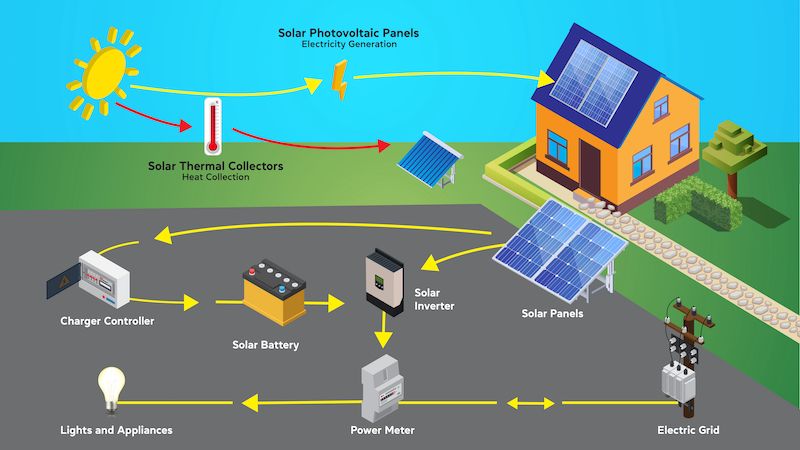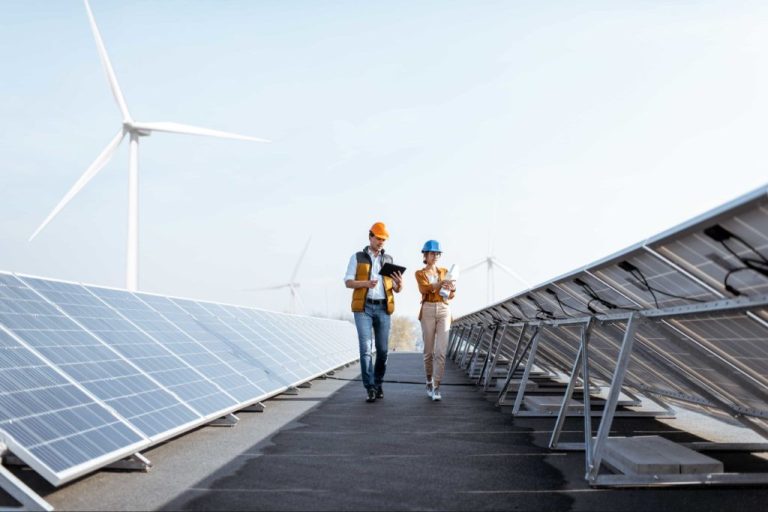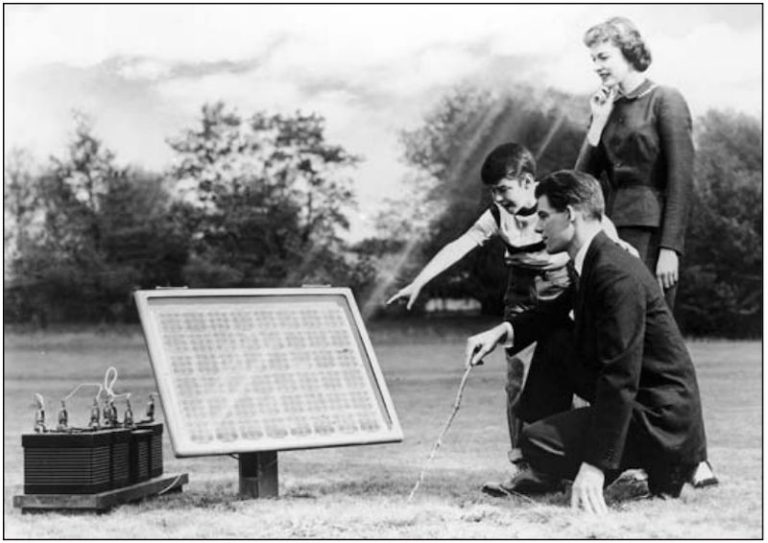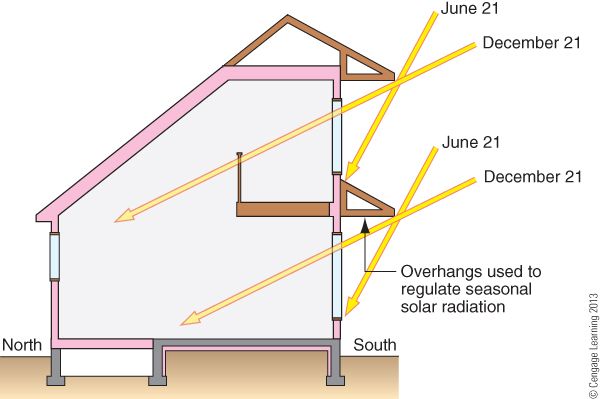Where Does Solar Energy Come From?
Solar energy is radiant light and heat from the Sun that is harnessed using a range of ever-evolving technologies such as solar heating, photovoltaics, and concentrated solar power. Solar energy relies on sunlight and can be converted to useful thermal and electrical energy (Solar Energy Basics: Journal, Uses, Types. Everything You Need to Know (2022), https://www.electronicsandyou.com/solar-energy-journal-uses-types-benefits.html).
Solar energy is considered a renewable energy source because the sun will continue to produce sunlight for billions of years to come. Transitioning to renewable energy sources like solar energy is critically important as we work to reduce greenhouse gas emissions and mitigate climate change. Solar energy has the potential to supply a significant portion of the world’s electricity needs and reduce reliance on finite fossil fuel resources.
There are two main categories of solar energy technology: photovoltaics (PV) which convert sunlight directly into electricity, and concentrated solar power (CSP) which uses mirrors to concentrate sunlight to drive traditional steam turbines or engines that create electricity. Solar thermal collectors can also be used to harness the sun’s energy for direct heating and cooling applications.
The Sun as the Original Source
The Sun is the original source of nearly all energy on Earth. Through the process of nuclear fusion, hydrogen atoms in the Sun’s core fuse together to form helium, releasing enormous amounts of energy in the form of gamma rays. These gamma rays interact with atoms in the Sun’s interior, gradually releasing energy as heat and light. This process has continued for billions of years, providing a steady stream of solar energy that bathes Earth.
Sunlight is a form of electromagnetic radiation with a wide range of wavelengths, spanning from infrared to ultraviolet. Of this solar radiation, the visible light that humans can see accounts for about 43% of the Sun’s total energy output. Capturing and converting sunlight is the basis for all solar energy technologies. Solar thermal systems use sunlight to directly heat water or air. Photovoltaic (PV) devices convert sunlight directly into electricity through the photovoltaic effect. Concentrated solar power systems use mirrors to concentrate sunlight to drive traditional steam turbines. The key is that all solar energy starts out as light emitted from nuclear fusion reactions inside the Sun.
Passive Solar Heating and Cooling
Passive solar design takes advantage of sunlight’s natural heating and lighting abilities to reduce the need for mechanical heating, cooling, and lighting in buildings. The key goal is to maximize solar heat gain in the winter and minimize it in the summer[1]. This is achieved through proper building orientation, window placement, use of thermal mass, and shading.
For ideal passive solar heating, buildings are oriented with the longest side facing south (in the northern hemisphere). South-facing windows allow low-angle winter sunlight to penetrate deeply into interior spaces. Materials like concrete, stone, and tile are used for floors and walls to absorb and slowly release this solar heat. Overhangs, awnings, and deciduous trees strategically shade windows in the summer when sunlight is more direct.
Proper passive solar design can reduce a building’s heating and cooling costs by 25-75% compared to conventional construction[2]. It provides free heating and lighting all year long. Other benefits include improved comfort and healthier indoor environments with more fresh air and natural daylighting.
Passive solar principles work in all building types and climates. With smart design, even existing structures can be adapted to maximize solar gain for heating and natural lighting.
Solar Thermal Energy
Solar thermal energy captures heat from the sun and uses it for water heating, space heating, and even electricity generation. Solar thermal collectors are used to absorb the sun’s thermal energy and transfer it to a fluid (usually water or air). There are two main types of solar thermal collectors:

Non-concentrating collectors – These have a large area to capture as much solar energy as possible. Flat plate collectors are the most common type and consist of a dark flat plate absorber and tubes underneath to carry the heat transfer fluid. These are generally used for solar water heating systems.
Concentrating collectors – These use mirrors or lenses to focus sunlight onto a small absorber area. The concentrated sunlight results in higher temperatures useful for electricity generation. Parabolic troughs, parabolic dishes, and solar power towers are examples of concentrating collectors.
Solar thermal systems provide renewable heat and hot water from the sun and help reduce reliance on fossil fuels. They can be implemented on both small and utility scales to meet residential, commercial and industrial energy needs.
Photovoltaic Solar Cells
Photovoltaic (PV) solar cells are the most common type of solar technology. They convert sunlight directly into electricity through the photovoltaic effect. When sunlight hits the solar cell, photons from the light are absorbed by the semiconductor materials in the cell, causing electrons to break free from their atoms. This generates an electric current as the freed electrons flow through the cell. The current is captured and delivered through wires to supply electricity.
Most PV solar cells are made from silicon, which is abundant and non-toxic. When silicon atoms are exposed to sunlight, some electrons gain enough energy to break free. The silicon atoms are organized into a crystalline structure with phosphorus added on one side and boron on the other side. This creates an electric field across the cell, with the phosphorus side having excess free electrons (negative charge) and the boron side having a shortage (positive charge). Metal conductive plates on the sides collect the electrons on one side and holes on the other, resulting in usable electricity.
Solar cell efficiency refers to the percentage of sunlight energy striking the cell that gets converted to usable electricity. Typical silicon solar panels on the market today have efficiencies around 15-20%. Researchers are developing newer materials and production methods to increase efficiency further, such as gallium arsenide cells which can achieve over 30% efficiency but have higher costs (https://science.howstuffworks.com/environmental/energy/solar-cell.htm).
Concentrated Solar Power
Concentrated solar power (CSP) systems use mirrors or lenses to concentrate a large area of sunlight onto a small area. The concentrated light is converted to heat, which drives a steam turbine connected to an electrical power generator[1].
There are several types of CSP technologies:
-
Parabolic trough systems – These systems use long parabolic mirrors to focus sunlight onto a receiver tube that runs along the mirror focal point. A heat transfer fluid heated in the receiver tube is used to make steam to drive a turbine.
-
Solar power towers – Heliostats (mirrors) focus sunlight onto a central receiver located atop a tower. The concentrated sunlight heats a fluid that flows through the receiver, generating steam.
-
Dish/engine systems – A parabolic dish of mirrors focuses sunlight onto a central engine that generates electricity directly.
A key advantage of CSP systems is the ability to incorporate thermal energy storage. Excess heat can be stored in materials like molten salts and used to continue power generation when sunlight is unavailable[2].
Adding storage provides dispatchable renewable energy and allows CSP to be a flexible grid resource.
[1] https://www.solarpaces.org/worldwide-csp/how-concentrated-solar-power-works/
[2] https://www.brunel.net/en/blog/renewable-energy/concentrated-solar-power
Solar Energy Storage
As solar energy becomes more widespread, storing the energy collected from the sun is becoming increasingly important. Solar panels only produce energy when the sun is shining, so storage allows excess energy to be captured and used at night or on cloudy days. Effective storage also helps mitigate solar energy’s intermittent nature and integrates it into the existing electric grid.
There are several ways to store solar energy. Batteries are a common method, with lithium-ion batteries being a popular choice due to their high efficiency and energy density. However, batteries can be expensive. Other storage methods include pumped hydroelectric storage, flywheel energy storage, compressed air energy storage, and thermal energy storage.https://lippoliselectric.com/guide-to-storing-solar-energy/ Storage can occur at both utility-scale and for residential needs. Utility-scale projects allow massive amounts of solar energy to be stored and distributed efficiently. In homes, small-scale batteries can store solar energy captured during the day for use at night.
Effective storage enables solar energy to be used anytime, not just when the sun is out. It is a key factor in making solar a viable baseload energy source.
Distributed vs Utility-Scale Solar
There are two main approaches when it comes to deploying solar photovoltaics: distributed solar and utility-scale solar. Distributed solar refers to solar panels installed on rooftops, parking garages, and other smaller sites located near where the energy is used. Utility-scale solar consists of large solar farms that can cover hundreds or thousands of acres and feed into the electric grid (Gizfe, 2019).
Distributed solar has the advantage of being located close to where the energy is consumed, reducing transmission losses. It also utilizes existing structures like rooftops instead of taking up new land. However, utility-scale solar benefits from economies of scale, with lower costs per watt as system size increases. Large solar farms can also be sited near existing transmission infrastructure. According to Project Drawdown, distributed solar avoids transmission and distribution losses of 8-15% compared to utility solar (Project Drawdown, 2020).
In terms of land use, one analysis estimates that distributed solar would require 290,000 hectares of land compared to 36,000 hectares for utility solar to generate the same amount of electricity annually in the US. However, utility solar requires that dedicated land while distributed solar is mounted on existing structures (Drawdown, 2020).
Overall, a mix of both approaches is likely needed to accelerate the transition to renewable energy while balancing land use, costs, and locality of power generation. Rooftop solar provides localized generation but has higher overall costs and intermittency issues. Large solar farms enable economies of scale but require more land and long-distance transmission (Breadarose, 2018).
Solar Energy Economics
The costs of solar energy systems have declined significantly in recent years, making solar power more affordable for homeowners and businesses. However, the upfront costs of purchasing and installing solar panels can still be high. According to Choose Energy, the average cost to install residential solar panels in 2022 was around $15,000 – $25,000 before solar incentives.
There are several financial incentives available to help offset the initial investment in solar panels. These include the federal solar tax credit, which provides a 26% tax credit for systems installed in 2022-2023, and local and utility rebates. Solar Renewable Energy Certificates (SRECs) are another financial incentive in some markets.(source)
The payback period for solar panels varies widely based on system costs, electricity rates, and available incentives. According to Greenlancer, the average payback period for residential solar panels is 6-12 years. However, incentives can reduce the payback period to less than 5 years in some cases. The expected lifespan of solar panels is typically 25-30 years, providing many additional years of free electricity generation after the payback period.
For commercial and utility-scale systems, the payback period can be under 5 years in high electricity cost markets. As solar costs continue to decrease while retail electricity prices rise, solar power is becoming increasingly cost-competitive with conventional power generation.
Future Outlook and Challenges
The future of solar energy looks bright, with significant potential for continued growth and adoption of new technologies. According to the International Energy Agency (IEA), solar photovoltaic capacity is expected to expand globally by over 6000 gigawatts between 2019 and 2040 under current energy and climate policies (IEA, 2020). This is driven by the rapidly declining costs of solar panels, improvements in energy storage solutions, and supportive government policies promoting renewable energy.
Some key areas of innovation and growth include floating solar farms, solar windows and building materials, advances in thin film and organic solar cells, and concentrated solar power plants with integrated thermal energy storage (Halcom Vietnam, 2021). Solar companies are also exploring ways to better integrate distributed solar generation into existing grids.
However, the solar industry faces challenges to further adoption, including the intermittent nature of solar resources, land use constraints for large-scale solar farms, installation and soft costs, and the need for supporting infrastructure like expanded transmission capacity. There are also ongoing debates around optimal solar incentive policies and regulatory frameworks as costs decline. Overcoming these challenges will be key for solar to reach its full potential. But the future is bright for solar to supply an increasing share of renewable, clean energy worldwide.





